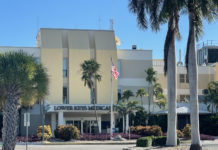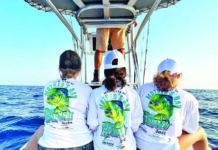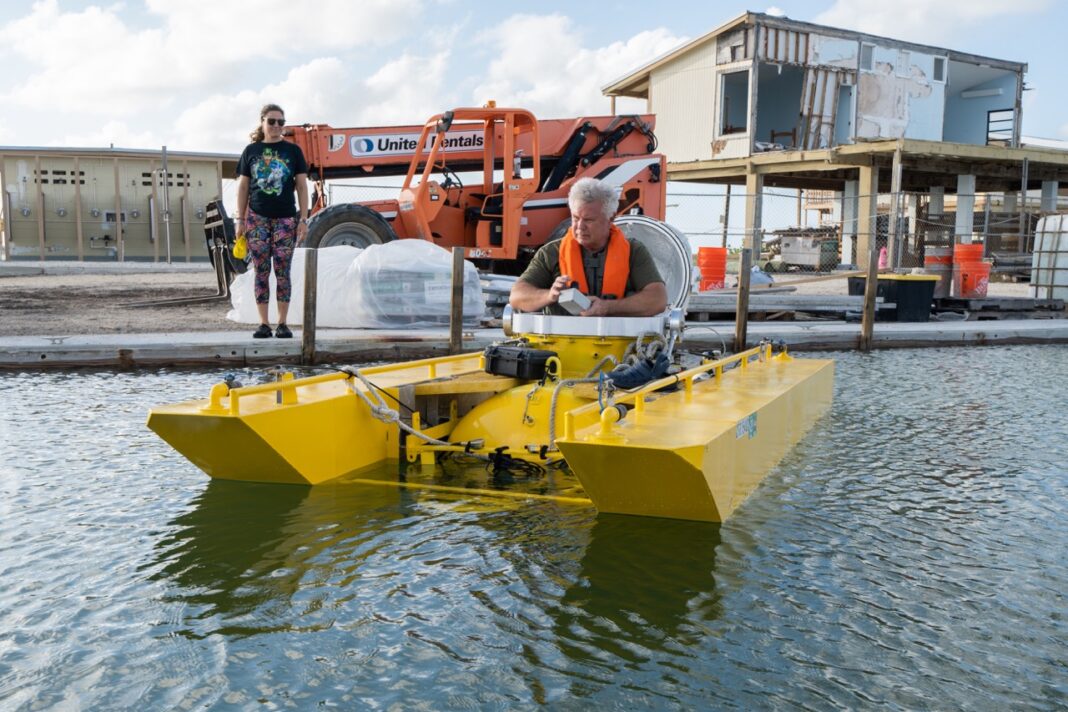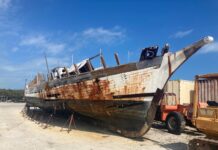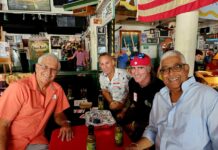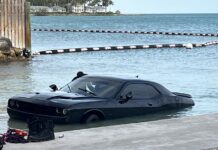Florida is a poster child for invasive species, and lionfish are among our most famous and destructive new neighbors. They’re endlessly hungry, easily adaptable to different marine environments and prolific reproducers. And they’re causing great harm to our local economy.
“Lionfish are voracious predators and opportunistic,” Allie Candelmo, conservation science manager and resident lionfish expert for Reef Environmental Education Foundation (REEF), told the Weekly. “They consume a lot of prey throughout the day and evening, which has led to dramatic declines in biodiversity and abundance of native populations when left unchecked.”
NOAA estimated that a single lionfish on a coral reef reduced recruitment of native fish by an alarming 79%. Because the prey that lionfish devour is also the favored food of snappers, groupers and other commercially and recreationally important native fish species, the dominance of lionfish often coincides with the decline of other valuable fish species. Moreover, when lionfish eat herbivores that clear the algae from coral reefs, algal growth goes unchecked and can smother corals.
So, what can we do? In the Keys, REEF hosts its Lionfish Derbies, which are a proven population control method. However, lionfish go deeper than most divers can – up to 300 meters, according to Candelmo.
Enter submarines.
Lionfish Central is a nonprofit dedicated to bringing awareness, technology and market-based solutions to fight the world’s lionfish invasion. Now, it’s also bringing a submarine to the table. Founder Scott Gonello said, “I tell people we have a lionfish nonprofit, and they say, ‘That’s cute.’ But, when the submarine came to town, people were calling me out of the blue and saying, ‘So, tell me about your submarine!’”
She’s cute, compact and yellow. Her name is “Great White,” and she was invented by Scott Cassell – a military veteran and expert submarine pilot who is turning a one-man submarine hull into a cutting-edge lionfish hunting machine that fits two (a pilot and a mission specialist). She’s rated to 300 feet, though her next upgrades will increase that to 600 feet and outfit her with laser beams for aim and an automated spear to catch and hunt lionfish. And, she can stay down for 8 to 10 hours – much longer than divers with pole spears can.
In March, Gonello and Cassell hosted a training session at Sea Base in Big Pine Key, which was attended by folks from as far away as Hawaii and Qatar. Orlando high school student Blaine Miller was one of the attendees hoping to become a mission specialist. He found what Gonnello and Cassell have created encouraging and motivating because it provides such an “outside the box” and “fresh” solution to the invasive species problem.
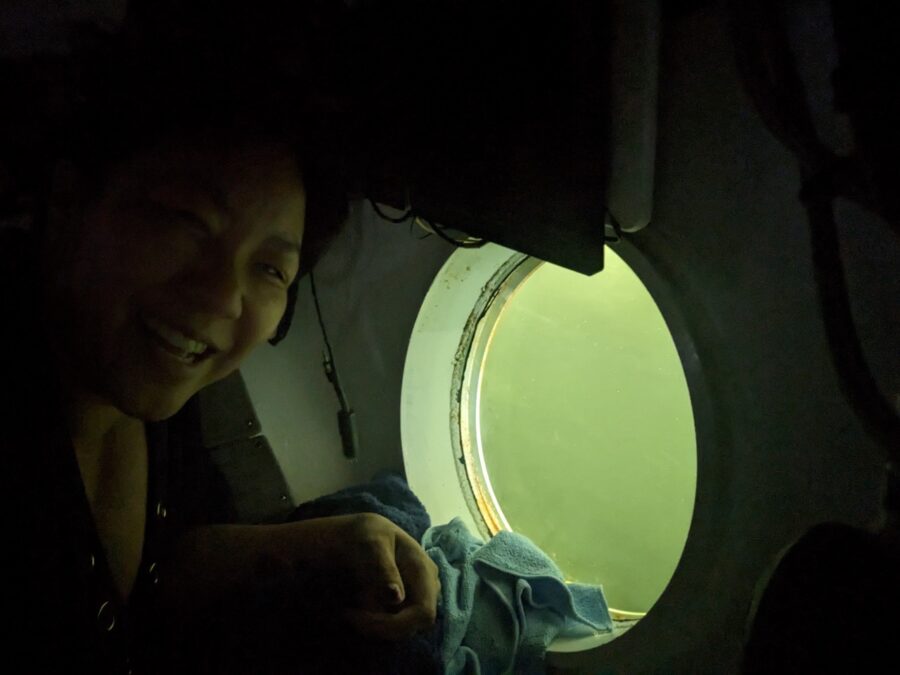
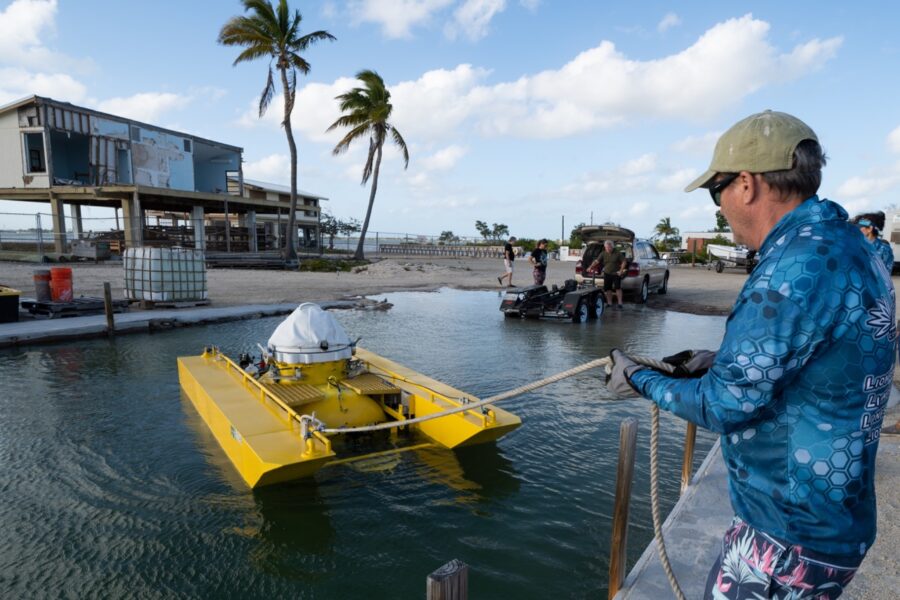
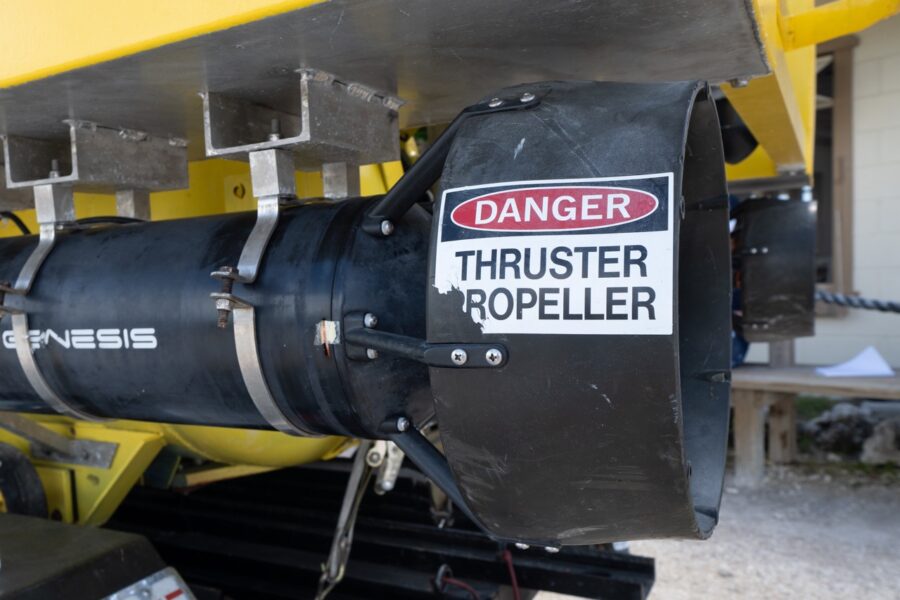
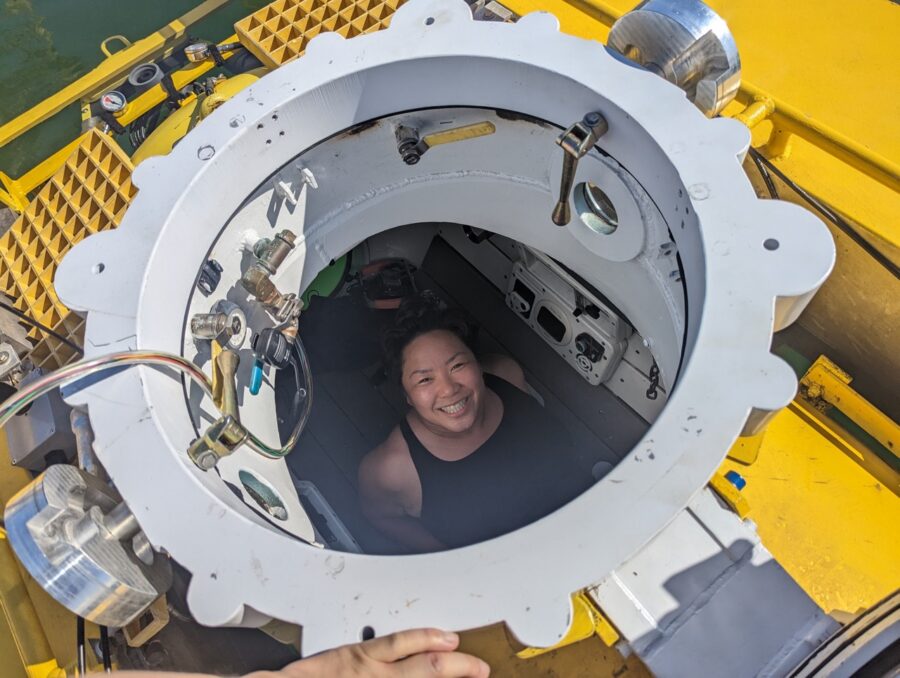
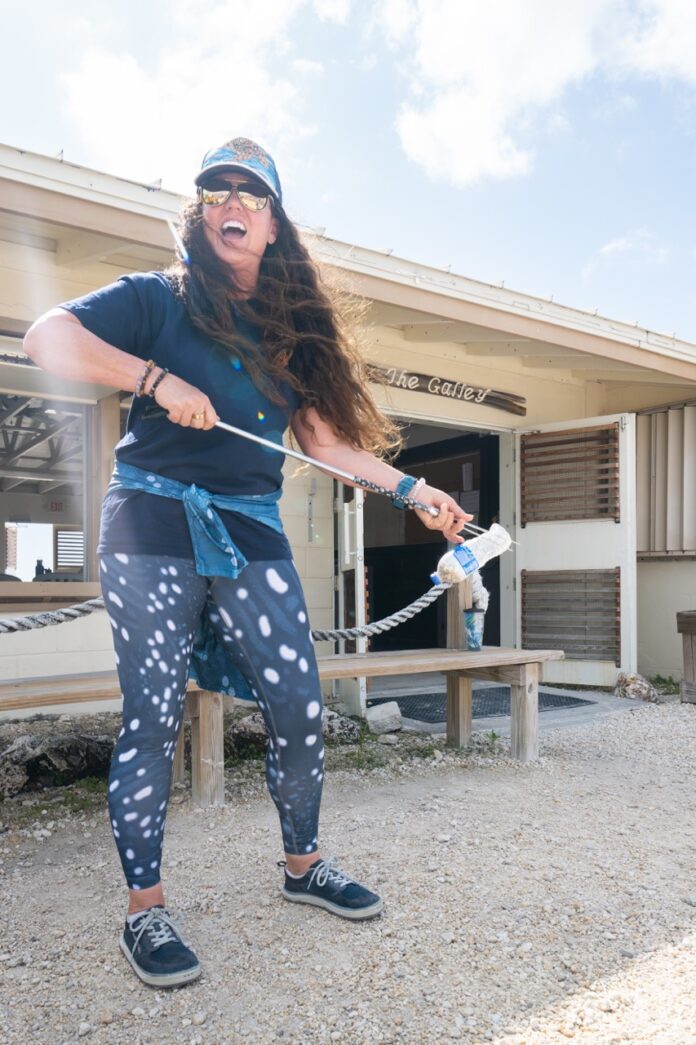
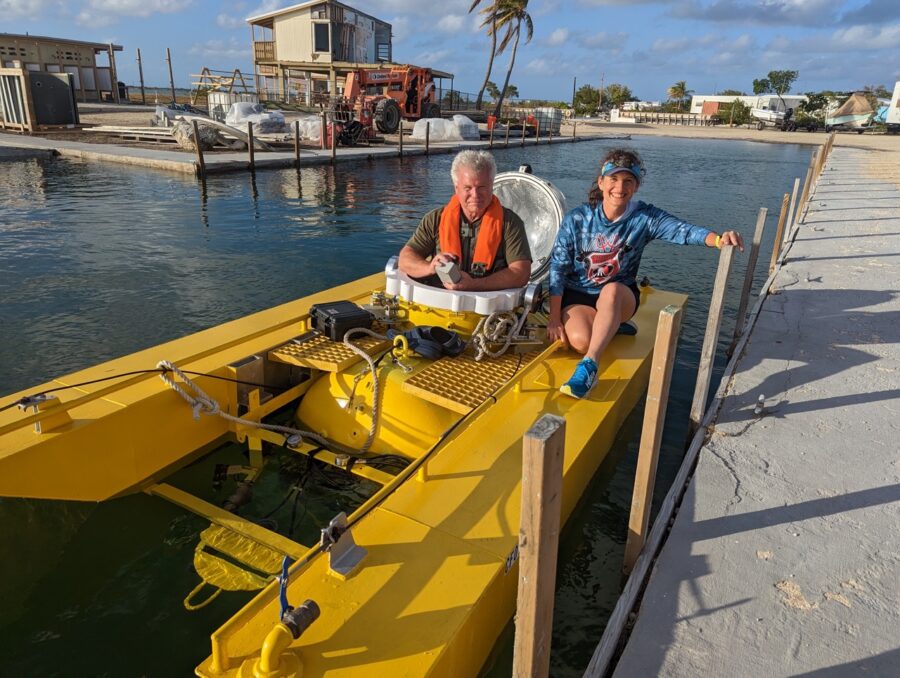
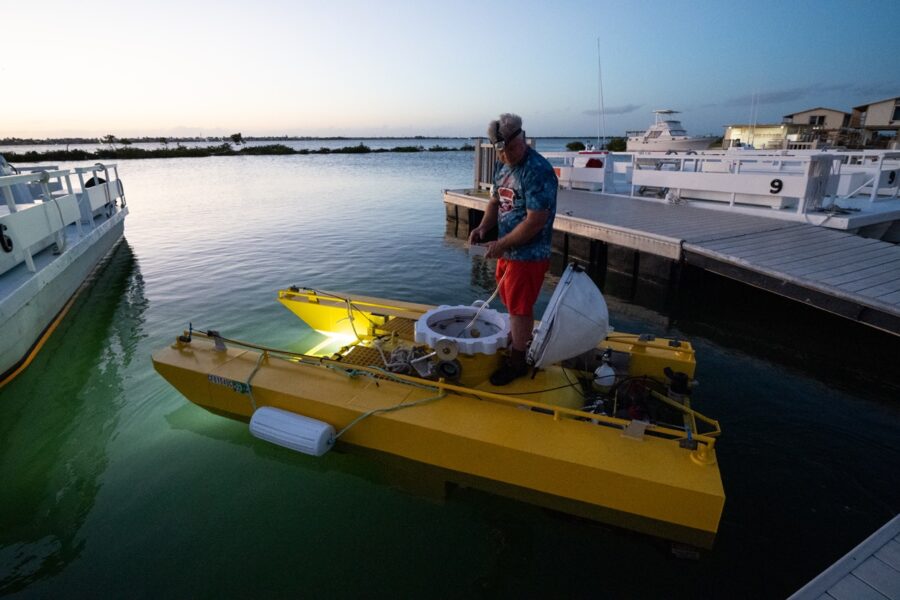
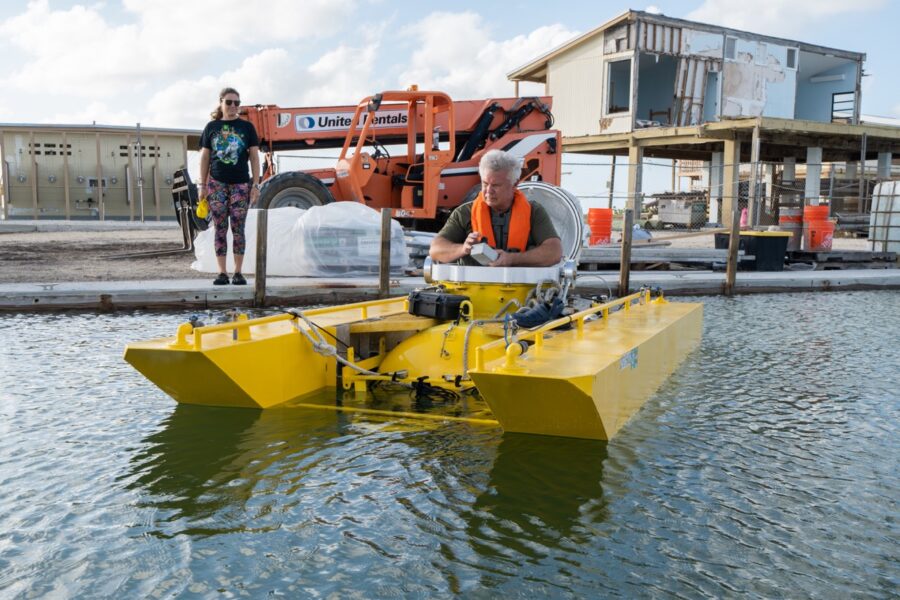
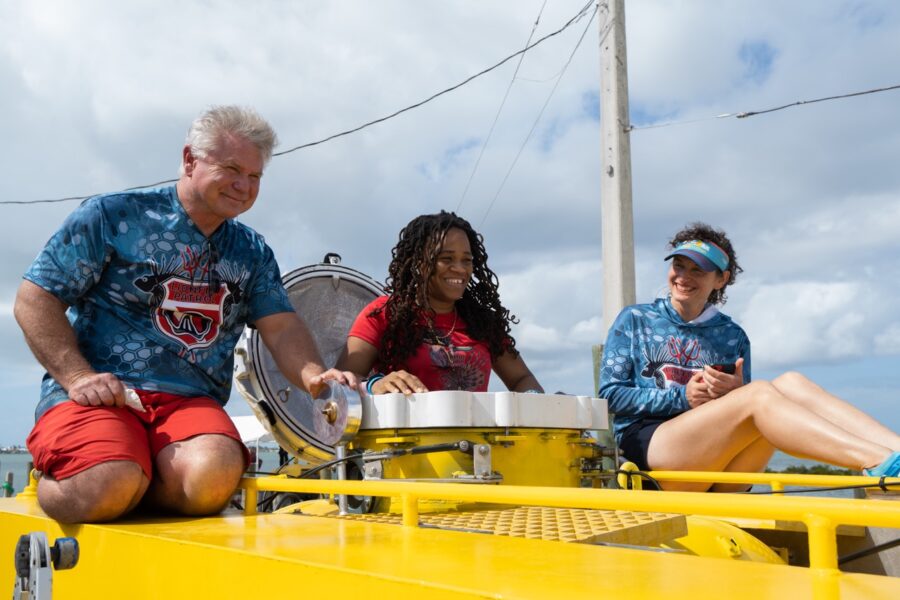
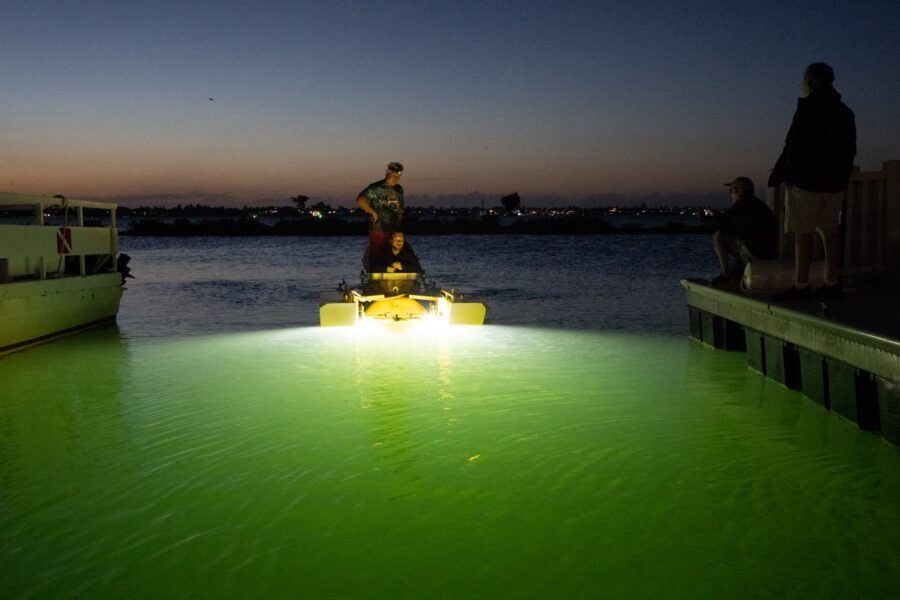

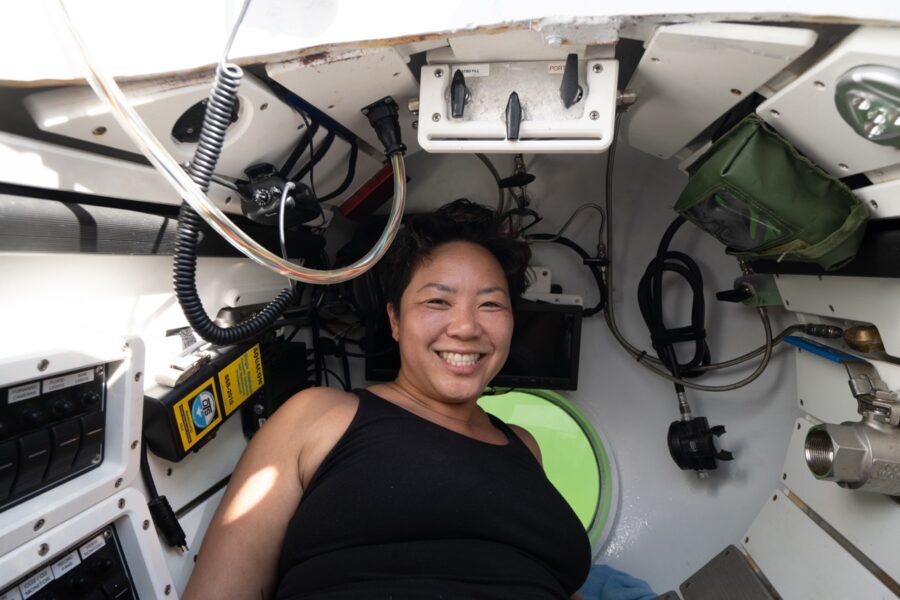
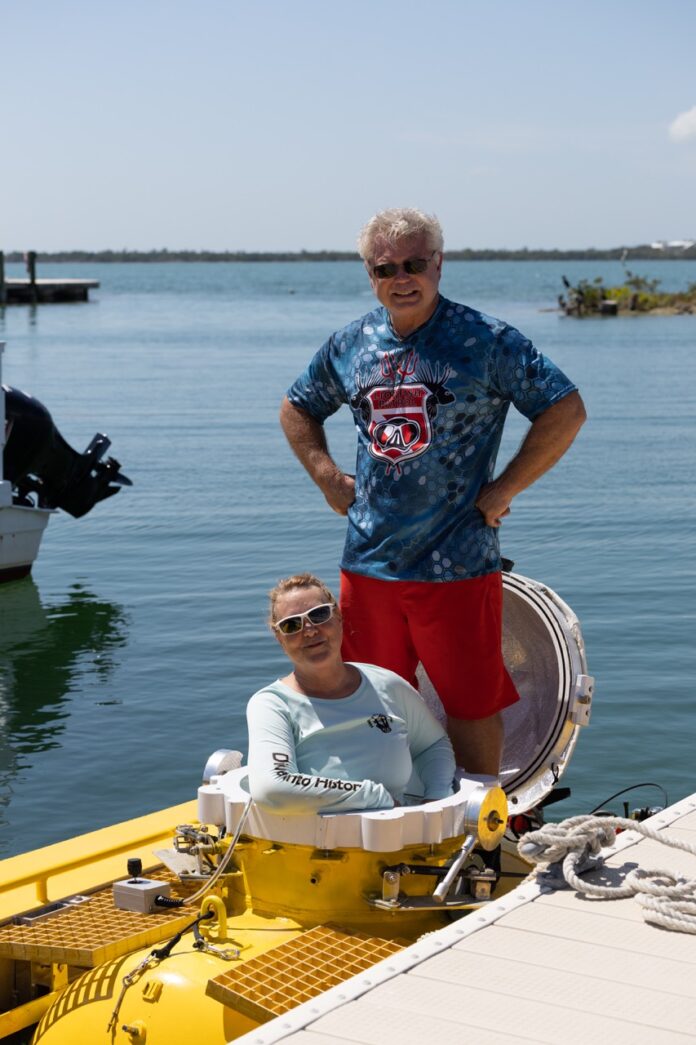
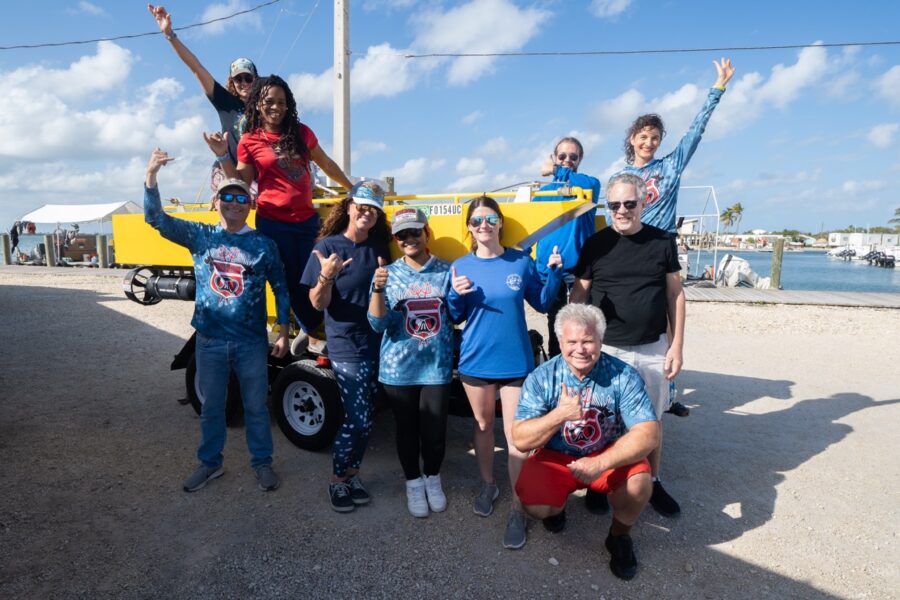
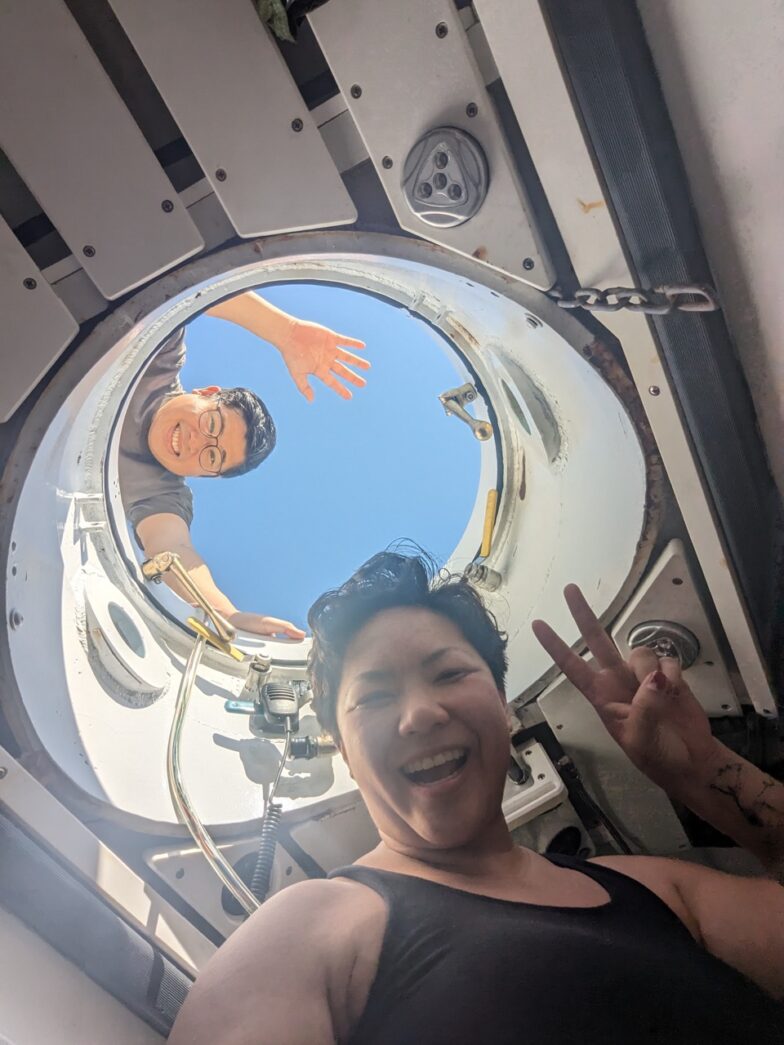
The two Scotts emphasize the accessibility of their system. The entire thing can be built for $70,000. Its daily operational cost ranges between $150 to $300, which is way less than a commercial fishing vessel and equivalent to the cost of one or two divers’ day trips.
“We’ve done the R&D, and we have the blueprint,” Gonnello said.
Great White is also “extremely mobile.” Unlike similar subs that launch off research vessels, the Scotts’ sub is trailerable with a regular car and launchable on a normal boat ramp. This cuts down on logistical and accessibility challenges and insurance costs.
Gonnello acknowledged the fatal implosion of the Titan sub in June – which occurred at an estimated depth of 3,500 meters.
“By staying at 300 feet there is less stress on the sub,” he said. “Carefully checking and monitoring the sub before, during and after the dive helps the crew maintain a safety protocol that helps decide what the sub needs each time.
“The sub can go to 500 feet but for safety reasons we will keep it at the 300-foot level. This is because in the event of an emergency you could find some tech divers that could reach that level for up to a few minutes to survey and make adjustments if needed – attach a line, check on crew, etc.”
The benefits go beyond lionfish population control and capture. Gonnello emphasizes that nobody knows what’s deep. There could be lionfish or ghostnets, new species or no species. With a submarine like Great White, which will record everything it sees in high quality video, they can help answer some of these questions and/or help map underwater places that have never been explored before.
The Scotts want to teach people around the world how to build and operate their own submarines to hunt lionfish and contribute to science. “What’s cool is if we can catch enough lionfish to sell it to local restaurants. Then, there’s money to make it worth your while,” Gonnello said. “We’re removing lionfish and helping the reef; selling to restaurants and bringing in the public.” Gonnello has existing outlets that want the filets and others who will take the skins to make leather and the venomous spines for jewelry. The ability to use the whole animal in this way really excites him.
At the end of the training, Miller concluded, “This is using modern technology to come up with modern solutions. As a young person, it’s encouraging to see people developing new technologies and putting them to use. Hopefully, when myself and others join the workforce, we’ll improve on these. They’re creating the groundwork for the modern era of conservation.”
